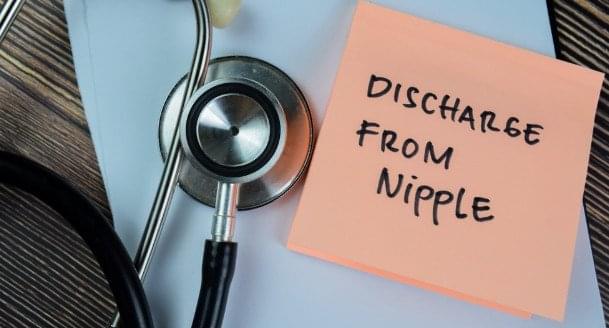Nipple Discharge: A Detailed Guide

Introduction
Nipple discharge is a topic of concern for many individuals, and understanding its causes, symptoms, and treatment options is crucial for anyone experiencing this issue. In this comprehensive guide, we will delve into the world of nipple discharge, providing you with valuable information to address your concerns.
Nipple Discharge Explained
Nipple discharge refers to any fluid that comes out of the nipple. It can vary in color, consistency, and quantity. While nipple discharge can occur in both men and women, it is more commonly associated with women, especially during certain life stages.
Types of Nipple Discharge
There are several types of nipple discharge, each with its unique characteristics:
- Bloody Discharge: This type of discharge may be alarming, but it doesn’t always indicate a serious problem.
- Clear Discharge: Clear discharge is often normal, but it can sometimes signal an underlying issue.
- Milky Discharge: Milky discharge is common during pregnancy and breastfeeding but can also occur in other situations.
- Yellow or Green Discharge: These colors may be due to an infection or other issues.
Common Causes
Understanding the underlying causes of nipple discharge is essential. Here are some common reasons:
- Hormonal Changes: Hormonal fluctuations, such as those during pregnancy and breastfeeding, can lead to nipple discharge.
- Infections: Infections of the breast, such as mastitis, can cause discharge.
- Medications: Certain medications, including birth control pills and antidepressants, may lead to nipple discharge.
- Benign Tumors: Non-cancerous growths in the breast can sometimes result in nipple discharge.
- Injury: Trauma to the breast can trigger discharge.
- Underlying Medical Conditions: Conditions like hypothyroidism and pituitary gland disorders can cause nipple discharge.
Symptoms to Watch For
Identifying the symptoms associated with nipple discharge can help determine whether it’s a cause for concern. Look out for:
- Unexpected discharge
- Change in discharge color
- Pain or discomfort in the breast
- Lumps or masses in the breast
- Fever and chills (if due to infection)
Diagnosing Nipple Discharge
When experiencing nipple discharge, seeking a proper diagnosis is crucial. Your healthcare provider may perform the following tests:
- Physical Examination: A thorough examination of the breasts and nipples.
- Mammogram: An X-ray of the breast to detect any abnormalities.
- Ultrasound: Sound waves to create images of the breast tissue.
- Blood Tests: To check for hormone imbalances or infections.
- Biopsy: A sample of breast tissue may be taken for further analysis.
Treatment Options
The treatment of nipple discharge depends on the underlying cause:
- Hormonal Changes: In many cases, hormonal changes resolve on their own.
- Infections: Antibiotics are typically prescribed for infections.
- Medications: Adjusting or discontinuing medications may be necessary.
- Benign Tumors: Surgical removal may be recommended.
- Injury: Time and care are often sufficient for healing.
- Underlying Medical Conditions: Treating the underlying condition is essential.
Frequently Asked Questions (FAQs)
What is nipple discharge?
Nipple discharge refers to any fluid that comes out of the nipple. It can vary in color and consistency.
Is nipple discharge normal during pregnancy?
Yes, nipple discharge is common during pregnancy and is usually due to hormonal changes.
When should I be concerned about nipple discharge?
You should be concerned if the discharge is bloody, accompanied by pain, or associated with lumps in the breast.
Can medications cause nipple discharge?
Yes, certain medications, such as birth control pills and antidepressants, can lead to nipple discharge.
How is nipple discharge diagnosed?
Diagnosis may involve a physical examination, mammogram, ultrasound, blood tests, or a biopsy.
What is the treatment for nipple discharge?
Treatment depends on the underlying cause and may include hormonal management, antibiotics, medication adjustments, or surgical removal.
Conclusion
Nipple discharge can be a cause for concern, but it is essential to remember that many cases have benign causes and can be effectively treated.
If you experience nipple discharge, consult with a healthcare professional to determine the underlying cause and appropriate treatment. Stay informed and proactive about your breast health.